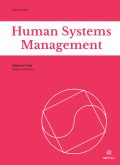Authors: de Juana-Espinosa, Susana Amalia | Brotons, Matilde | Sabater, Vicente | Stankevičiūtė, Živilė
Article Type:
Research Article
Abstract:
BACKGROUND: The COVID-19 pandemic has transformed the teaching ways in universities, rapidly moving from face-to-face delivery models to online and distance learning. Consequently, the multimedia and digital competencies of the teaching staff were suddenly put onto the stage, resulting in the realisation that many of them were not sufficiently skilled to face this challenge due to a lack of prior training. OBJECTIVE: The goal of this explanatory research is to present and make a comparison of key training programs, deemed best practices, that address different ways to assist higher education teaching staff to acquire the multimedia competencies required
…to be technologically-proficient in their classes. METHODS: A desk research provides the data for a multiple case study of courses implemented in universities of five European countries, namely Spain, Lithuania, North Macedonia, Romania, and Slovenia. RESULTS: The results of the study show a total of 28 courses ranging from how to deliver online teaching to gamification, going through other topics such as photo and video editing, that enable higher education teachers to acquire digital skills. The main challenges detected for the success of these training programs are the teachers’ lack of time for training, non-positive attitudes towards technology, and lack of innovative capacity in their teaching processes. Among the positive outcomes, we can find that these universities opt for programs with courses varied in content, to cover a wider range of skills, as well as offering courses at several levels of development so that all staff may improve, from the very beginners to more advanced tools. CONCLUSION: By identifying the challenges and success factors behind the best practices hereby analysed, the lessons obtained from this research may serve as benchmarks for other universities to develop efficient multimedia training programs for university staff.
Show more
Keywords: Higher education, multimedia competencies, ICT teaching tools, teaching staff development programs, ICT integration
DOI: 10.3233/HSM-220060
Citation: Human Systems Management,
vol. 42, no. 2, pp. 193-207, 2023
Price: EUR 27.50





